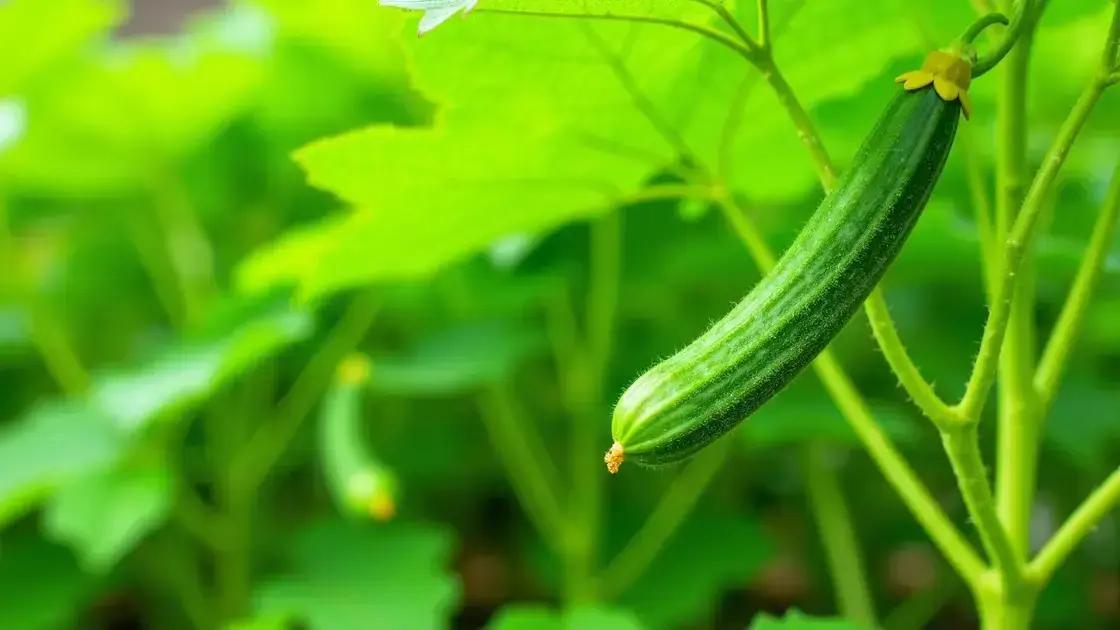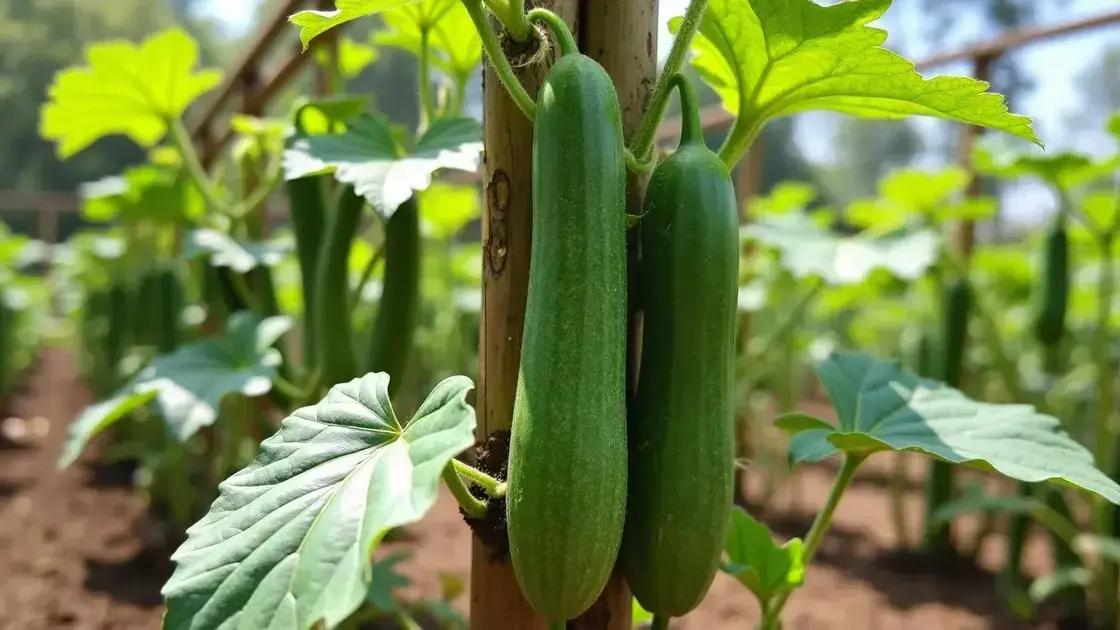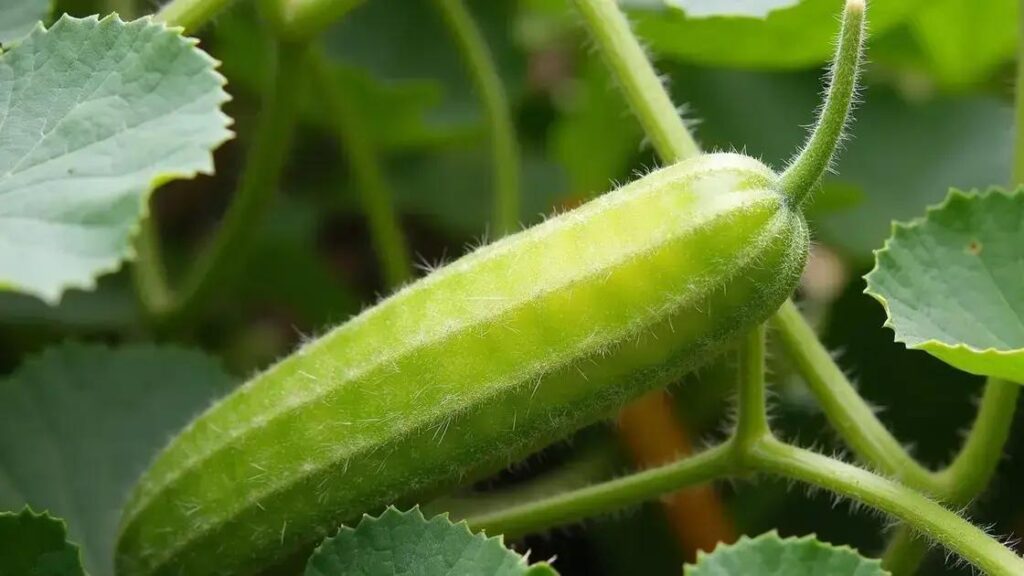The African Cucumber typically takes 70 to 90 days to show results after planting, influenced by factors like soil quality, watering practices, and temperature. Best practices include selecting a sunny location, proper fertilization, and regular monitoring of pests and plant health.
Are you curious about how long it takes for African Cucumber to show results? Gardening enthusiasts often seek effective tips and schedules to ensure their plants thrive. This intriguing fruit, known for its unique appearance and taste, can bring rewards with the right care. In this article, we delve into the various aspects of its growth, helping you understand the factors that influence how long it takes to see results.
Understanding African Cucumber Growth Rate

The growth rate of African Cucumber can be fascinating for gardeners. This unique plant, also known as Kiwano, typically begins to show results within a few weeks after planting. However, there are several factors that contribute to its overall growth rate.
Seed Germination
When you first plant African Cucumber seeds, they usually take about 7 to 14 days to germinate. The soil temperature plays a crucial role here. Ensure the soil is warm, ideally between 70°F and 80°F (21°C to 27°C), for quicker germination. Consistent moisture is also vital during this stage.
Vegetative Growth
After germination, African Cucumbers enter a vegetative growth phase. During this period, the plants focus on developing leaves and stems. This stage can last around 30 to 45 days. Providing adequate sunlight, nutrition, and water is essential to support healthy growth.
Fruit Development
Once the plants are established, they will start flowering and fruiting. African Cucumber usually begins to bear fruit approximately 70 to 90 days after planting. In optimal conditions, this timeline could be shorter, but factors such as plant health and environmental conditions are always at play.
Your Role as a Gardener
As a gardener, understanding the growth rate of African Cucumber helps you make timely decisions. Monitoring your plants and adjusting care based on their growth stages is key to successful cultivation. Regularly check for pests, provide proper irrigation, and ensure they are getting enough sunlight.
Factors Influencing Result Timing

Understanding the factors influencing result timing in African Cucumber cultivation is essential for success. Several elements can affect how quickly you see results from your plants.
Soil Quality
The quality of the soil directly impacts the growth of African Cucumber. Good soil provides essential nutrients. It should be rich in organic matter, well-drained, and have a pH level between 6.0 and 6.8. Testing your soil before planting can help you make necessary adjustments.
Watering Practices
Watering plays a critical role in the development of African Cucumber. These plants need consistent moisture but not waterlogged conditions. Aim to water deeply and less frequently, allowing the soil to dry out slightly between watering. This method encourages strong root growth.
Temperature and Climate
African Cucumber thrives best in warm weather. Ideal temperatures for growth are between 70°F and 85°F (21°C and 29°C). Cooler temperatures may slow growth significantly. Be aware of your local climate when planning your planting schedule.
Pest and Disease Management
Healthy plants are more likely to produce results quickly. Keep an eye out for pests like aphids and cucumber beetles that can damage the crops. Regularly inspect your plants and take necessary actions, such as using organic insecticides or companion planting, to keep them healthy.
Best Practices for Cultivating African Cucumber

To cultivate African Cucumber successfully, following best practices is essential. These tips can help ensure you achieve the best results.
Choosing the Right Location
First, pick a sunny spot in your garden. African Cucumber needs at least 6 to 8 hours of direct sunlight daily. Ensure the area has well-drained soil to prevent water buildup around the roots.
Planting Techniques
When planting African Cucumber, space your seeds or seedlings about 36 to 48 inches apart. This spacing allows for proper airflow and reduces competition for nutrients. Consider using a trellis to support the vines as they grow.
Regular Feeding
African Cucumber benefits from regular feeding. Use a balanced fertilizer every month. Look for organic options like compost or fish emulsion for a natural boost. This helps encourage healthy growth and abundant fruit production.
Consistent Care
Consistent care is vital. Regularly check for weeds, pests, and diseases. Weeding reduces competition for nutrients, while pest management keeps plants healthy. Water consistently, ensuring plants receive 1 to 2 inches of water weekly, especially during dry spells.
Monitoring Progress and Adjusting Care

Monitoring progress and adjusting care for African Cucumber is crucial for maximizing yield. Regular check-ins on the plants’ health can help you catch any issues early.
Regular Inspections
Inspect your plants at least once a week. Look for signs of pests, diseases, or nutrient deficiencies. Early detection can prevent problems from worsening. Pay attention to the leaves, flowers, and fruits for any unusual changes.
Adjusting Watering Techniques
As the plants grow, their water needs may change. If you notice the leaves wilting or turning yellow, it might be a sign of overwatering or underwatering. Adjust your watering schedule based on weather conditions and the soil moisture level.
Fertilization Monitoring
Monitor the plants’ growth to determine if you need to adjust your fertilization schedule. If plants appear weak or have stunted growth, consider using a stronger fertilizer or adding supplements. Ensure you do not over-fertilize, as this can harm the plants.
Timely Pruning
Pruning is essential for health and productivity. Remove any yellowing leaves and any crowded vines to improve airflow. This can help prevent disease and promote better fruit production. Regular pruning encourages steady growth and enhances the overall health of the plant.
Wrapping Up: Cultivating African Cucumber Successfully
In conclusion, understanding the growth of African Cucumber and the factors that influence it is vital for anyone looking to enjoy this unique fruit. With careful monitoring and adjustments in care, gardeners can ensure that their plants thrive and produce effectively.
By implementing best practices, such as choosing the right location, ensuring proper watering, and being vigilant with pest management, you can significantly enhance your results.
Remember that patience is key; the timeline for seeing results can vary based on many conditions. With commitment and attention to your plants’ needs, you can achieve a rewarding African Cucumber harvest.
FAQ – Frequently Asked Questions about Growing African Cucumber
How long does it take for African Cucumber to show results?
African Cucumber typically takes about 70 to 90 days to start fruiting after planting, depending on the growing conditions.
What factors influence the growth rate of African Cucumber?
Factors include soil quality, watering techniques, temperature and climate, and pest management.
What are the best practices for cultivating African Cucumber?
Best practices include selecting a sunny location, ensuring proper spacing when planting, regular feeding with fertilizer, and consistent care.
How can I monitor progress and adjust care for my African Cucumber plants?
Regularly inspect your plants for pests or diseases, adjust watering based on their needs, and prune as necessary to promote healthy growth.
What kind of soil is best for growing African Cucumber?
African Cucumber prefers well-drained soil rich in organic matter, with a pH level between 6.0 and 6.8.
How often should I water African Cucumber?
Water your African Cucumber plants about 1 to 2 inches per week, ensuring the soil remains consistently moist but not soggy.












